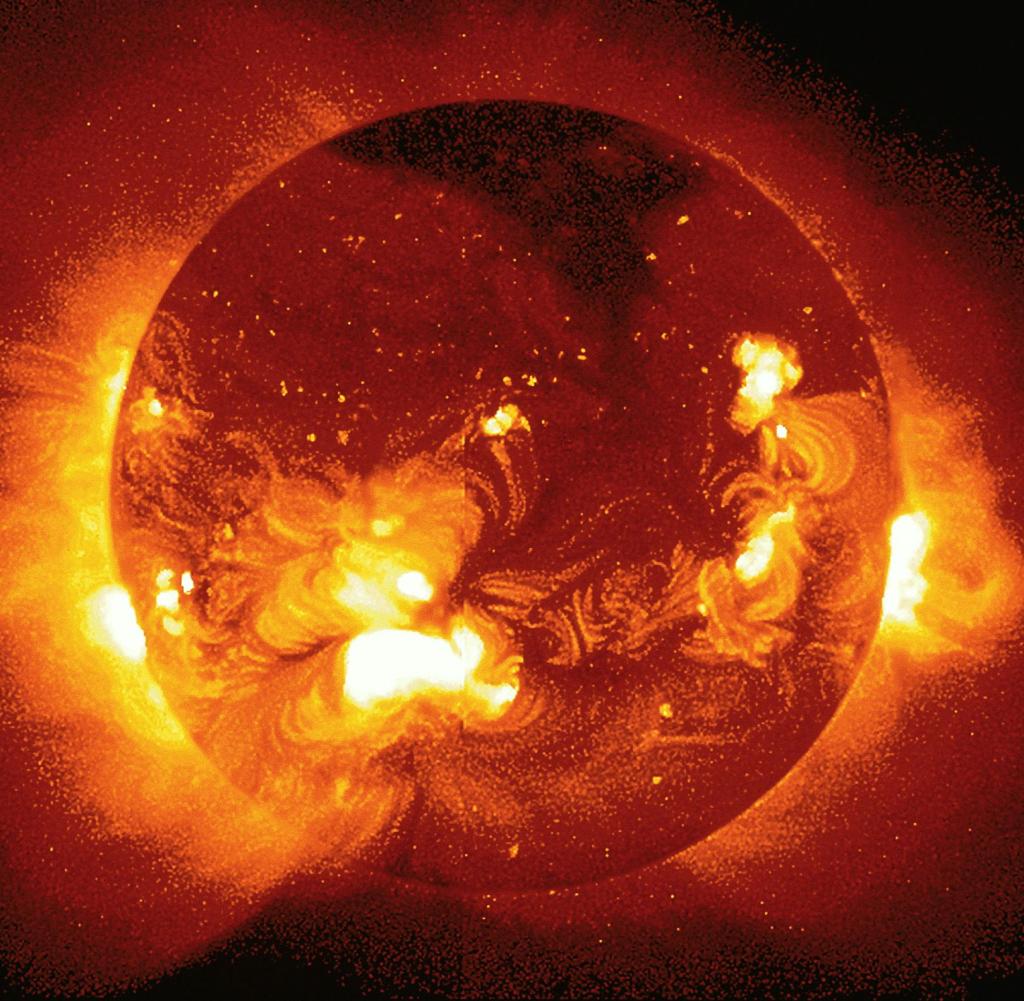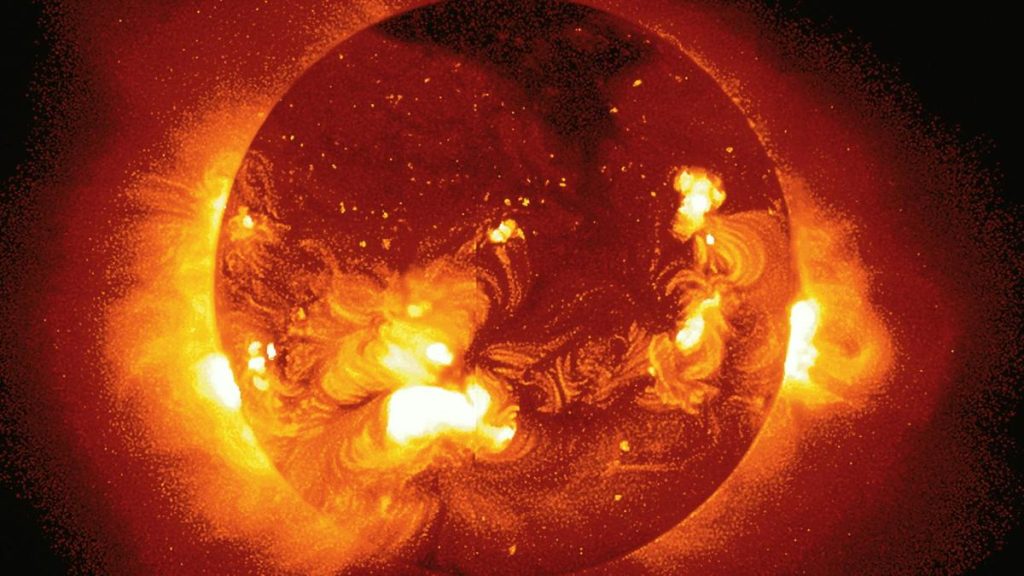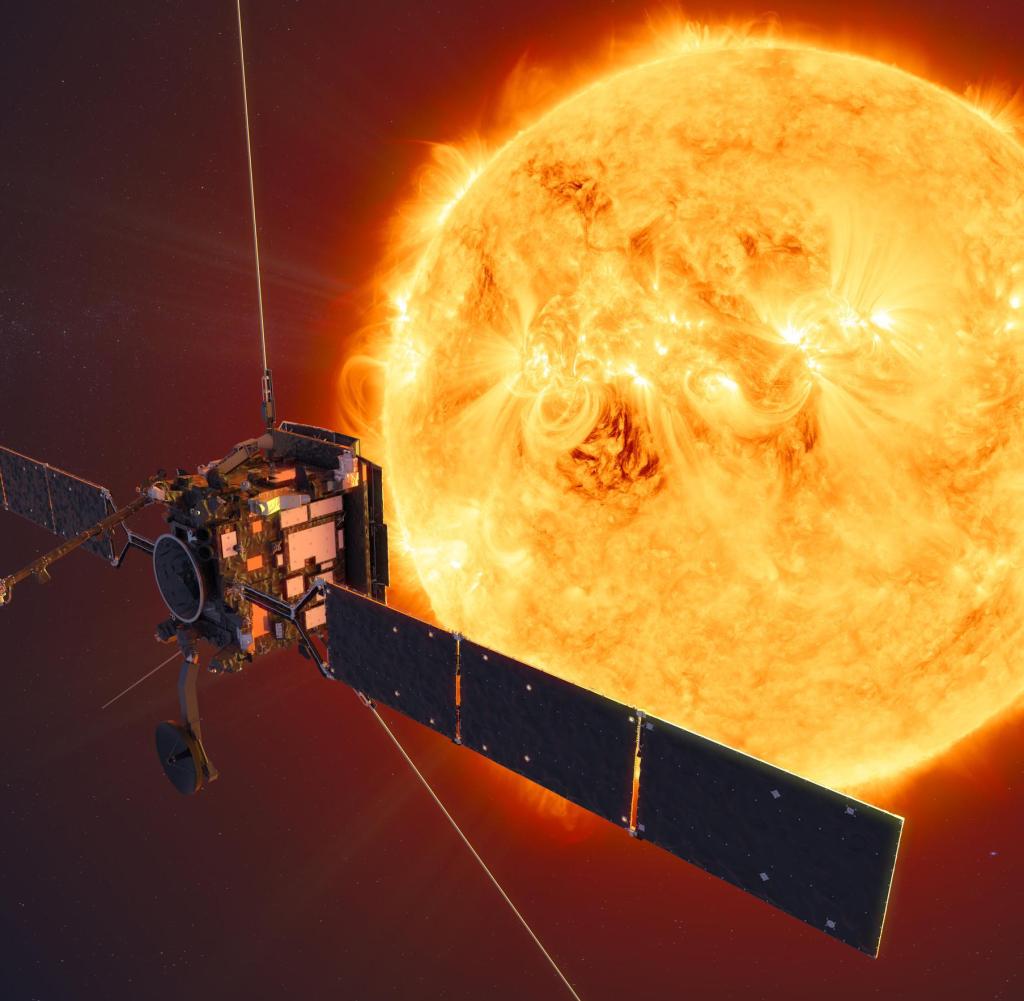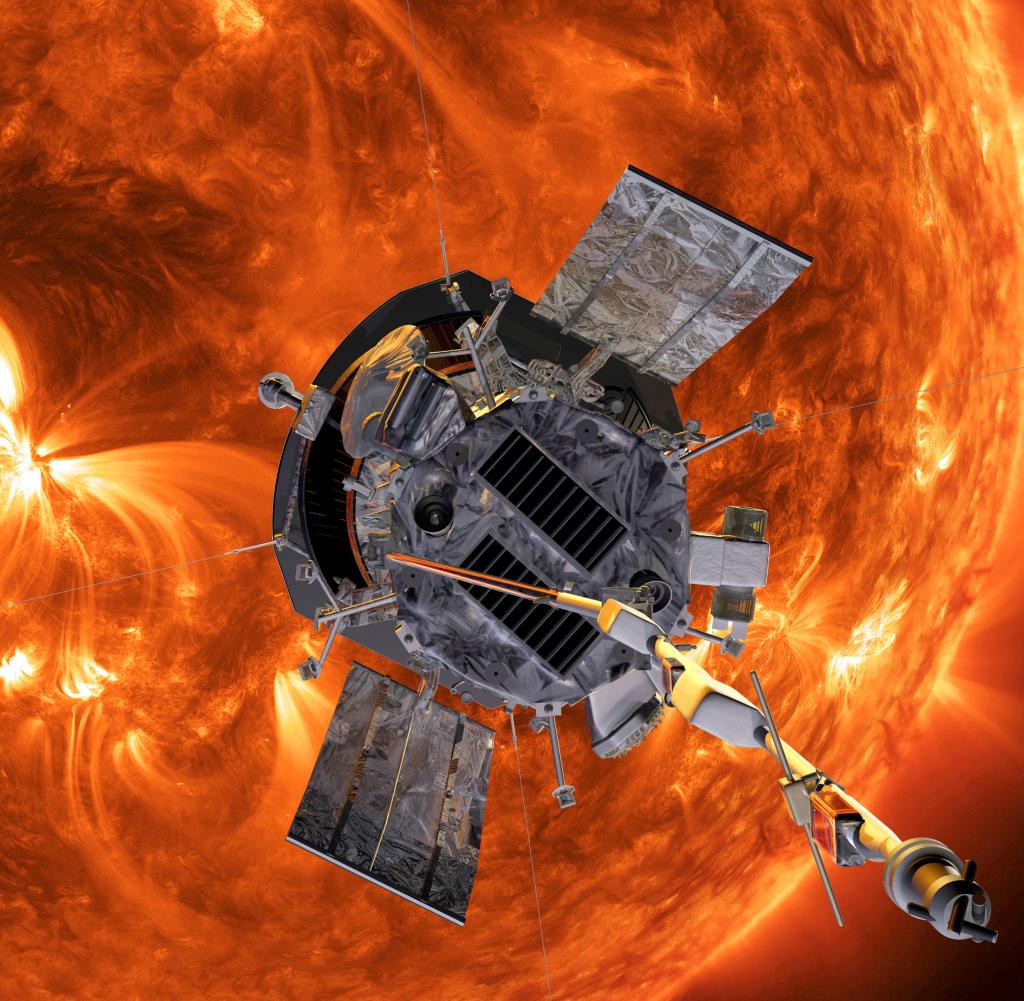Sudden rise in solar activity


The sun throws matter into space during eruptions. The particles also reach Earth as the solar wind
Source: picture-alliance / KPA / Galaxy
The number of sunspots and the strength of the solar wind fluctuate in a regular eleven-year cycle. However, in the current cycle, the activity of the Sun is much greater than expected. What does it mean?
DrHe is not always active the sun. On their surface there is sometimes more, sometimes less, turbulence and gas jets that throw particles into space. Again and again there are regular explosions and thus strong solar winds. They can certainly feel themselves on or near the ground.
So the American company lost SpaceX In early February 2022, amid a solar storm, dozens of satellites. Active particles from the Sun warmed the thin atmosphere in the relatively low orbit of the satellites, increasing friction in their tracks.
A satellite loses speed due to friction. This reduces the height of the track. This effect eventually caused the SpaceX satellites to burn up in the atmosphere.
Radio and terrestrial energy networks can also be disrupted by strong solar winds and the health of astronauts in space can be compromised – enough reasons to keep a close eye on what is known as space weather.
space weather tomorrow
It would be desirable to have good forecasts that could warn of impending solar storms in time, so that satellite operators, for example, could put their small satellites in a safe position.
The measure of the sun’s activity is, among other things, the number of its spots. It emits less visible light than the surroundings and thus appears darker. It is 1,000 to 1,600 degrees Celsius cooler than the rest of the Sun’s surface (photosphere), which has a temperature of about 5,500 degrees.
The number, location, and size of sunspots are not fixed. Long-term observations show that it makes up a maximum of 0.4 percent of the Sun’s surface. But there are always phases when the sun is completely spotless.
During times of high sunspots, solar flares also occur frequently. The temperature of these areas can reach 7000 ° C. The number and area of sunspots vary in an average cycle of eleven years.
The sun changes its poles regularly
Scientists have observed 24 cycles so far. As of 2020, the Sun is in its 25th cycle. Why the Sun’s activity changes regularly is still an open question, although there are some possible explanations.
In any case, it is clear that sunspots are caused by strong magnetic fields that regionally impede the transfer of heat from the interior of the Sun to its surface. It is also known that the sun also exchanges its magnetic poles, that is, the north and south poles, every eleven years.
Before the start of the twenty-fifth session, he chaired the Solar Cycle Prediction Committee NASA US Department of Meteorology and Oceanography NOAA Forecast of the path of solar activity. Accordingly, the next maximum is expected between November 2024 and March 2026. The most likely date for this period is July 2025, when the peak of 115 sunspots is expected.
Radio waves reveal solar activity
But this value can be much higher than expected. It has already become clear that the number of sunspots that have already been observed is much higher than theoretical predictions – by almost two times. This once again illustrates the extent of uncertainty in our knowledge of the driving forces behind fluctuating solar activity.
In addition to the number of sunspots, the intensity of the radioactive radiation emitted by the Sun at a frequency of 2.8 GHz is also a measure of the Sun’s activity. This so-called solar radio flux index is also higher than the expected values, in line with the larger number of sunspots.
So the 25th edition promises to be particularly exciting. If the sun becomes more active than expected in the medium term, this will have consequences not only for the satellites, but for the Earth’s climate as well.
If astronauts are exposed to such showers of particles from the Sun during a space flight, for example to Mars, it can lead to dangerous exposure to radiation.
Researchers at the Helmholtz Dresden Rosendorf Center (HZDR) put forward the hypothesis that the planets Venus, Earth and Jupiter influence the magnetic field of the Sun with their own gravitational forces, thereby inducing the 11-year rhythm. In any case, a constellation of these three planets recurs every eleven years.

“Total coffee aficionado. Travel buff. Music ninja. Bacon nerd. Beeraholic.”









More Stories
Exploding Fireball: Find the meteorite fragments
Neuralink's competitor lets blind people see again with an implant
A huge meteorite has hit Earth – four times the size of Mount Everest